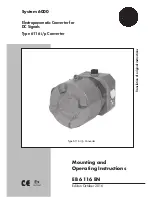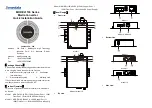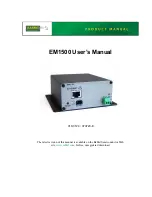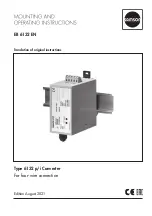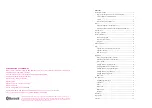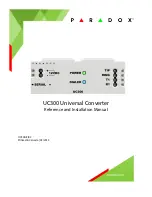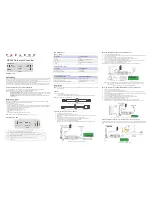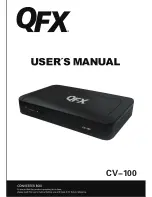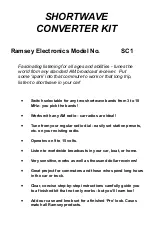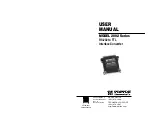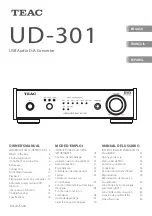
1.0 WARRANTY INFORMATION
Patton Electronics
warrants all Model 2089 components to be
free from defects, and will—at our option—repair or replace the product
should it fail within one year from the first date of shipment.
This warranty is limited to defects in workmanship or materials, and
does not cover customer damage, abuse, or unauthorized modification.
If this product fails or does not perform as warranted, your sole
recourse shall be repair or replacement as described above. Under no
condition shall
Patton Electronics
be liable for any damages incurred
by the use of this product. These damages include, but are not limited
to, the following: lost profits, lost savings, and incidental or
consequential damages arising from the use of or inability to use this
product.
Patton Electronics
specifically disclaims all other warranties,
expressed or implied, and the installation or use of this product shall be
deemed an acceptance of these terms by the user.
1.1 RADIO AND TV INTERFERENCE
The Model 2089 generates and uses radio frequency energy, and if
not installed and used properly—that is, in strict accordance with the
manufacturer's instructions—may cause interference to radio and
television reception. The Model 2089 has been tested and found to
comply with the limits for a Class A computing device in accordance
with the specifications in Subpart J of Part 15 of FCC rules, which are
designed to provide reasonable protection from such interference in a
commercial installation. However, there is no guarantee that
interference will not occur in a particular installation. If the Model 2089
does cause interference to radio or television reception, which can be
determined by disconnecting the EIA/TIA-574 interface, the user is
encouraged to try to correct the interference by one or more of the
following measures: moving the computing equipment away from the
receiver, re-orienting the receiving antenna, and/or plugging the
receiving equipment into a different AC outlet (such that the computing
equipment and receiver are on different branches).
1.2 CE NOTICE
The CE symbol on your Patton Electronics equipment indicates
that it is in compliance with the Electromagnetic Compatibility (EMC)
directive and the Low Voltage Directive (LVD) of the Union European
(EU). A Certificate of Compliance is available by contacting Technical
Support.
1
is a
straight through
cable of the shortest possible length—we
recommend 6 ft or less. The DB-9 connector on the Model 2089 is
wired according to the EIA/TIA-574 Standard, as shown below:
EIA/TIA-574 Standard
DB-9
SIGNAL
1 -----------------CD
2 -----------------RD
3 -----------------TD
4 -----------------DTR
5 -----------------SG/FG
6 -----------------DSR
7 -----------------RTS
8 -----------------CTS
9 -----------------(Optional 6-12 VDC Power)
Note:
The Model 2089 is configured as a DCE (Data
Communications Equipment), and is therefore designed to connect to a
DTE (Data Termination Equipment). If you need to connect the Model
2089 to another DCE device, please call Patton Technical Support at
(301) 975-1007 for details on constructing the proper crossover cable.
4.4 OPERATING THE MODEL 2089
Once the Model 2089 is properly installed, it should operate
transparently—as if it were a standard cable connection. Operating
power is derived from the RS-232 data and control signals; there is no
“ON/OFF” switch. All data signals from the RS-232 and RS-485
interfaces are passed straight through. Additionally, one hardware flow
control signal is passed
in each direction
.
APPENDIX A
MODEL 2089 SPECIFICATIONS
Transmission Format:
Asynchronous
Data Rate:
Up to 115,200 bps
Range:
Up to 9 miles
Serial Interface:
DB-9, male or female; wired as a DCE
according to EIA/TIA-574 Standard.
Transmit Line:
2, 4 wire unconditioned twisted pair
Transmit Mode:
4-wire, full or half duplex; 2-wire half duplex
Control Signals:
DSR turns “ON” immediately after the
terminal raises DTR; DCD turns “ON” after
recognizing the receive signal from the line;
CTS turns “ON” after the terminal raises
RTS.
RTS/CTS Delay:
8 mSec or “no delay”
16





















